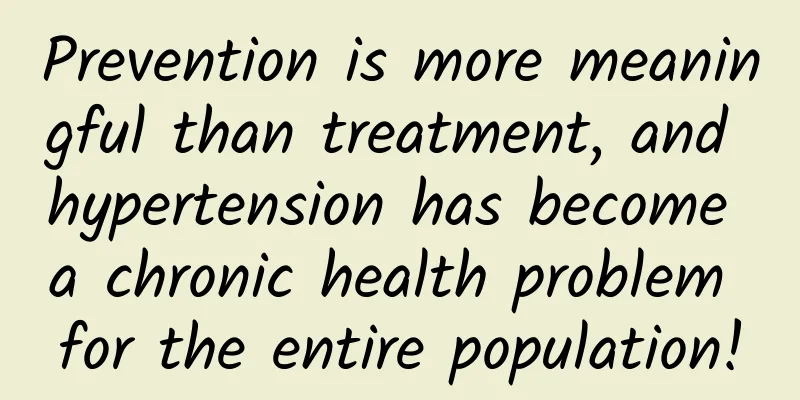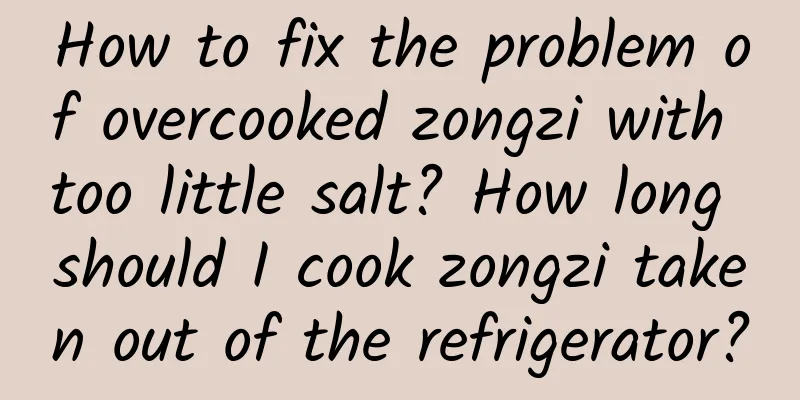Prevention is more meaningful than treatment, and hypertension has become a chronic health problem for the entire population!

|
The blood pressure we often talk about is actually the abbreviation of systemic arterial blood pressure. Blood pressure refers to the pressure acting on the blood vessel wall when blood flows in the blood vessels. It is the driving force that pushes blood to flow in the blood vessels. Depending on the different blood vessels, it can be divided into arterial blood pressure, venous blood pressure and capillary blood pressure. The blood pressure measured in daily life generally refers to arterial blood pressure. Arterial blood pressure can be divided into systolic pressure and diastolic pressure, which are often referred to as high and low pressure. When the heart contracts, the pressure generated by blood flowing from the ventricle into the artery is called systolic pressure. At this time, the pressure of blood on the blood vessels is the greatest, so it is also called "high pressure"; when the ventricle relaxes, the arteries will produce elastic retraction, and the flow of blood in the body will slow down, the pressure on the blood vessel wall will decrease, and the blood pressure will also drop. The pressure at this time is called diastolic pressure, also called "low pressure". Hypertension is a chronic, systemic disease characterized by increased arterial pressure, especially increased diastolic pressure, which may be accompanied by functional or organic changes in organs such as the heart, blood vessels, brain and kidneys. Generally, without taking antihypertensive drugs, systolic blood pressure ≥140mmHg, or diastolic blood pressure ≥90mmHg, is considered hypertension. If the blood pressure was low in the past, the blood pressure did not rise to the above level, and symptoms of hypertension such as headache and dizziness have appeared, it is also hypertension. Vascular sclerosis or peripheral vascular spasm and narrowing cause increased peripheral vascular pressure or increased cardiac output, resulting in high blood pressure. Long-term development of the above-mentioned lesions will cause continuous high blood pressure and cause damage to blood vessels, heart, brain, and kidneys, leading to hypertension. The incidence of hypertension is very high in my country. The prevalence of hypertension among residents aged ≥18 years in my country is 27.5%, and the total number of people is as high as 300 million. In addition to the commonly susceptible groups such as the elderly and obese, people who are addicted to smoking, drinking, and those under excessive stress are also prone to hypertension. The first is overweight and obese people. Overweight and obesity are important causes of hypertension. According to surveys, for every 1 increase in body mass index, the number of diagnosed hypertension patients increases by 5% within 5 years. The type of obesity is closely related to the occurrence of hypertension, and people with abdominal obesity are more likely to develop hypertension. The second is smokers. Cigarettes are extremely harmful to the human body. Most long-term smokers have arterial intimal damage and atherosclerosis. In addition, harmful ingredients in cigarettes, such as carbon monoxide and nicotine, can increase blood viscosity and blood flow resistance, thereby raising blood pressure. People who often drink a lot. Drinking a lot will increase blood volume. When drinking, due to the effect of alcohol, there is temporary vasodilation, blood pressure does not fluctuate much or even decreases, but after drinking, blood vessels contract, and due to the large blood volume, blood pressure rises significantly, and even causes cerebral hemorrhage and endangers life. At the same time, excessive drinking can cause vasospasm and cause acute myocardial ischemia. People with a family history of hypertension. Genetic factors are considered to be an important cause of hypertension. People with a family history of hypertension and bad habits are prone to hypertension. People who are under too much stress. Mental stress is a major cause of high blood pressure. Elderly people: With age, blood vessels become less elastic and atherosclerosis worsens, leading to high blood pressure. People with bad eating habits: A high-salt, low-calcium diet can increase blood pressure. The general standard for the prevention of hypertension is "three-level prevention". For people who already have risk factors for hypertension but have not yet developed hypertension, primary prevention, that is, pre-onset prevention, is adopted; it mainly controls and reduces risk factors through a reasonable diet and adjusting psychological balance, thereby reducing the incidence rate. Secondary prevention refers to early detection, early diagnosis, and early treatment of hypertension, that is, pre-clinical prevention of hypertension; this requires patients to actively communicate with doctors, have regular check-ups, adhere to blood pressure monitoring and rational medication on the basis of adhering to primary prevention. Tertiary prevention is to prevent complications of hypertension and reduce mortality and disability rates. In the daily prevention of hypertension, it is crucial to measure blood pressure regularly, keep abreast of changes in blood pressure and the efficacy of antihypertensive drugs, and avoid accidents. Surveys show that there are two peak periods of blood pressure during the day, namely 6-10 am and 4-8 pm. Measuring blood pressure during these two time periods can help you understand the highest blood pressure value of the day. Salt-restricted diet also plays a large role in the prevention of hypertension. Scientific research has shown that salt intake is positively correlated with the incidence of hypertension, and people with lifelong low sodium intake are almost immune to hypertension. The World Health Organization stipulates that the daily salt intake per person is 3-5 grams, and people with a history of hypertension should control it to 2-3 grams. Smokers and drinkers are prone to hypertension, so quitting smoking and limiting alcohol consumption are also very important for preventing and controlling hypertension. Hypertensive patients should drink less than 1 liang (white wine) per day or quit drinking completely. Obesity is a common factor that causes high blood pressure. Intervention of obesity and weight control are very helpful in controlling high blood pressure. The standard body mass index is weight ÷ height² (kg/m). For middle-aged men, it is 21-24.5, and for middle-aged women, it is 21-25. Ensuring sleep and regulating mood also play a role in preventing hypertension. In terms of dietary adjustment, patients with hypertension should pay attention to eating small meals frequently to avoid overeating. Eat a low-sodium, high-potassium diet, eat less pickles, dried shrimps, chrysanthemums, and water spinach, and increase the intake of beans, walnuts, milk, peanuts, bamboo shoots, fish, fungus, rapeseed, green onions, etc. to supplement calcium and iron intake. At the same time, eat 1-2 apples a day to supplement vitamin B and vitamin C. Drink tea in moderation. Tea contains tea polyphenols, and green tea is higher than black tea. Tea polyphenols can prevent vitamin C from oxidizing, promote its use in the body, and excrete harmful chromium ions. In addition, tea also contains a variety of trace elements. Brewing 4-6 grams of tea every day and drinking it for a long time is very beneficial to the human body. Preventing high blood pressure is not simply good for the heart. As long as there are blood vessels in the body, they can benefit. Pay attention to your blood pressure and pay attention to your health! References: [1] Zhang Mingde, Bu Jianxue, Cao Yingjiang, et al. Treatment and conditioning of hypertension. Zhengzhou: Henan Science and Technology Press, 2017, 12-13. [2] Chen Rongsheng, Wang Wei, et al. Handbook of Prevention and Treatment of Hypertension. Beijing: China Population Press, 2017, 8-9. [3] Zhang Mingde, Bu Jianxue, Cao Yingjiang, et al. Treatment and conditioning of hypertension. Zhengzhou: Henan Science and Technology Press, 2017, 36-47. |
<<: What kind of cranberry is it? What kind of cranberry is good?
>>: What are the benefits of eating cranberries? Where are cranberries mainly produced?
Recommend
What causes acne during menstruation?
I believe many people have the same problem. Acne...
How to prevent gynecological diseases
Gynecological diseases are very worrying and frig...
Did you know that tar is more dangerous than nicotine?
According to statistics, the current number of sm...
What are the reasons for a one-week delay in menstruation?
It has to be said that more and more female frien...
Can pregnant women drink apple cider vinegar? When should I drink apple cider vinegar?
Apple cider vinegar contains organic acids and am...
What are the ingredients for making spicy cabbage? Can spicy cabbage still be eaten if it becomes sour?
Kimchi is a pickled vegetable that is sour, sweet...
What should I prepare for confinement?
From pregnancy to childbirth, women need to consu...
How many days of bleeding is normal after having the IUD inserted? An authoritative doctor tells you!
IUD insertion is a very long-term contraceptive m...
What are some simple ways to remove freckles?
What women care about most is taking care of thei...
Is breast fibroid surgery safe?
Breast fibroids are a very common disease among f...
Can I take birth control pills if I am one month pregnant?
In today's real life, many people lack proper...
The best day to get pregnant after menstruation
After getting married, many women's prerequis...
Can I take ibuprofen for toothache during breastfeeding?
If you have a toothache during breastfeeding, it ...









